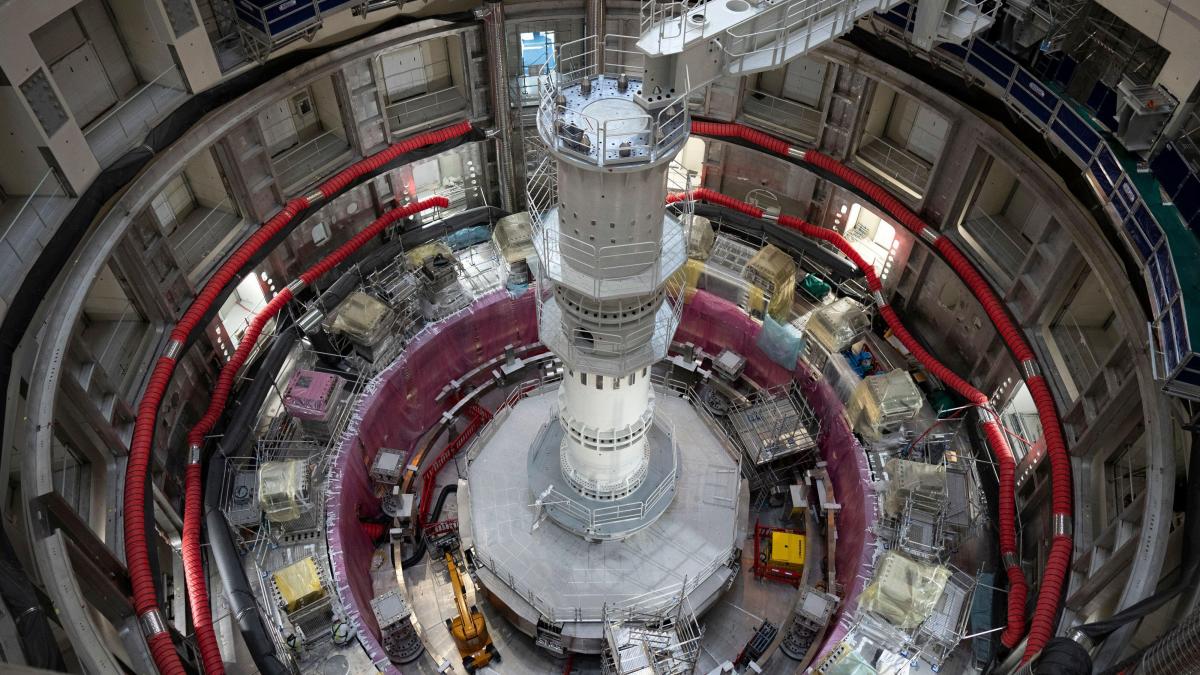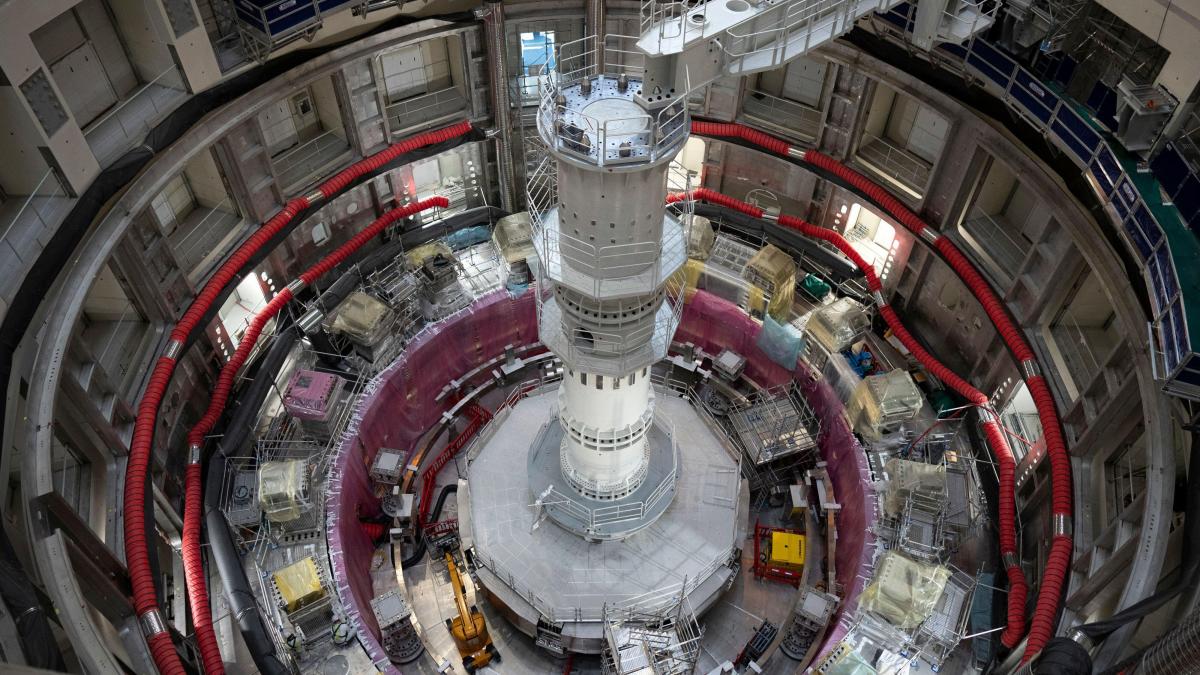
The world’s largest fusion reactor has finally been completed, but it won’t run for another 15 years, project scientists have announced.
The International Fusion Energy Project (ITER) fusion reactor, consisting of 19 massive coils looped into multiple toroidal magnets, was originally slated to begin its first full test in 2020. Now scientists say it will fire in 2039 at the earliest.
This means that fusion power, of which ITER’s tokamak is at the forefront, is very unlikely to arrive in time to be a solution for the climate crisis.
“Certainly, the delay of ITER is not going in the right direction,” Pietro Barabaschi, ITER’s director general, said at a news conference on Wednesday (July 3). “In terms of the impact of nuclear fusion on the problems humanity faces now, we should not wait for nuclear fusion to resolve them. This is not prudent.”
The world’s largest nuclear reactor and the product of collaboration between 35 countries — including every state in the European Union, the U.K., China, India and the U.S. — ITER contains the world’s most powerful magnet, making it capable of producing a magnetic field 280,000 times as strong as the one shielding Earth.
The reactor’s impressive design comes with an equally hefty price-tag. Originally slated to cost around $5 billion and fire up in 2020, it has now suffered multiple delays and its budget swelled beyond $22 billion, with an additional $5 billion proposed to cover additional costs. These unforeseen expenses and delays are behind the most recent, 15-year delay.
Related: Nuclear fusion reactor in UK sets new world record for energy output
Scientists have been trying to harness the power of nuclear fusion — the process by which stars burn — for more than 70 years. By fusing hydrogen atoms to make helium under extremely high pressures and temperatures, main-sequence stars convert matter into light and heat, generating enormous amounts of energy without producing greenhouse gases or long-lasting radioactive waste.
But replicating the conditions found inside the hearts of stars is no simple task. The most common design for fusion reactors, the tokamak, works by superheating plasma (one of the four states of matter, consisting of positive ions and negatively charged free electrons) before trapping it inside a donut-shaped reactor chamber with powerful magnetic fields.
RELATED STORIES
—2nd nuclear fusion breakthrough brings us a (tiny) step closer to limitless clean energy
—1st evidence of nuclear fission in stars hints at elements ‘never produced on Earth’
Keeping the turbulent and superheated coils of plasma in place long enough for nuclear fusion to happen, however, has been challenging. Soviet scientist Natan Yavlinsky designed the first tokamak in 1958, but no one has since managed to create a reactor that is able to put out more energy than it takes in.
One of the main stumbling blocks is handling a plasma that’s hot enough to fuse. Fusion reactors require very high temperatures (many times hotter than the sun) because they have to operate at much lower pressures than is found inside the cores of stars.
The core of the actual sun, for example, reaches temperatures of around 27 million Fahrenheit (15 million Celsius) but has pressures roughly equal to 340 billion times the air pressure at sea level on Earth.
Cooking plasma to these temperatures is the relatively easy part, but finding a way to corral it so that it doesn’t burn through the reactor or derail the fusion reaction is technically tricky. This is usually done either with lasers or magnetic fields.
EMEA Tribune is not involved in this news article, it is taken from our partners and or from the News Agencies. Copyright and Credit go to the News Agencies, email news@emeatribune.com Follow our WhatsApp verified Channel





